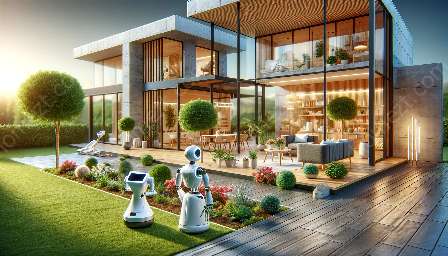Increasingly, robotics is being integrated into smart home design to provide a futuristic and convenient way of living. The application of robotics in home automation and intelligent home design offers numerous benefits, including enhanced security, energy efficiency, and personalized assistance. This article explores the potential of robotics in smart home design and its compatibility with home automation and intelligent home design.
Benefits of Robotics in Smart Home Design
There are several advantages to incorporating robotics into smart home design. One of the primary benefits is enhanced security, as robots can be programmed to monitor the home and detect intruders or unusual activities. Additionally, robotics can contribute to energy efficiency by managing lighting, heating, and cooling systems based on occupancy and usage patterns. Furthermore, robots can provide personalized assistance to occupants, such as reminding them of appointments, assisting with household chores, and even providing companionship for elderly residents.
Applications of Robotics in Home Automation
The integration of robotics in home automation has revolutionized the way homes are managed and controlled. Robots can be deployed to perform various tasks, such as cleaning, gardening, and pet care, freeing up time for homeowners to focus on other activities. In the realm of security, robots equipped with cameras and sensors can patrol the property, identify potential threats, and alert authorities if necessary. Moreover, robots connected to smart home systems can regulate environmental settings, track energy usage, and optimize resource consumption, leading to cost savings and sustainable living.
Intelligent Home Design and Robotics
Intelligent home design encompasses the seamless integration of technology to create an environment that is intuitive, efficient, and responsive to the needs of its occupants. Robotics plays a pivotal role in realizing intelligent home design by offering solutions that adapt to evolving lifestyles and enhance the overall living experience. For instance, robotic furniture and appliances can dynamically adjust their configurations to optimize space utilization, while robotic assistants can learn and adapt to individual preferences, providing a tailored and personalized living environment.


